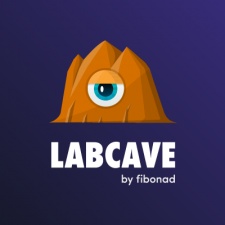As an app store optimisation (ASO) agency, a key objective of our services is to analyse and predict the traffic behaviour of any given app.
Nonetheless, despite having taken on multiple data analysis projects over the years, it is still very hard to understand and draw specific conclusions on the impact that user acquisition (UA) has on organic traffic.
Defining user acquisition
When talking about UA, we refer to the traffic that comes from non-organic paid channels both on iOS and Google Play. Each store categorises this non-organic traffic in different terms.
- Apple differentiates between Third Party Referrer (e.g. Facebook app, Instagram app, Game app, Chrome app, etc) and Web Referrer (Safari Browser)
- Google Play console categorises this non-organic traffic in three different channels: Google Ads Campaigns, Third-Party Referrers and Tracked Channels (UTM).
Although both stores name the channels differently, there is one essential common factor, these channels only track traffic that has not been generated organically. It is important to keep this in mind since we don’t think that an install coming from organic channels is equal (in quality) to an install coming from a paid channel.
That is why here at Lab Cave we focus our efforts on growing the organic traffic of an app; which makes understanding the impact that external factors, such as paid traffic, have on the visibility of an app even more important.
In the mobile industry, it’s commonly known that there is a positive relationship between paid traffic and organic traffic. In other words, the more paid traffic a game has, the better organic traffic will be.
Although this is true for many cases, we have encountered some apps where this correlation was not established (see Case Two below).
However, the main question here is not whether UA impacts the organic traffic of an app or not. Instead, the important question for us is to be able to numerically measure this impact and to apply this measurement to a variety of apps.
Historically, the term K-Factor has been used to measure the impact of how many organic installs result from paid traffic. Thus, K-Factor is the basic assessment of whether organic installs are affected by paid installs.
According to this theory, one could assess and numerically measure the exact impact of UA on organic traffic. However, as we have stated earlier, prior to measuring the impact of UA on organic traffic, we first need to find out if there is a direct correlation between these two channels.
Study of the correlation between UA and organic traffic
Keeping these assumptions in mind, here at Lab Cave we have conducted in-depth analyses on the potential relationship between UA and organic traffic.
In order to find a statistically significant relationship, our data science team looked into three different apps with high traffic in all channels.A data sample of seven consecutive months was analysed, where a linear correlation study between UA and organic installs with time series was conducted.
More specifically, a cross-correlation analysis with the Pearson correlation coefficient was conducted to study the potential correlation between installs coming from paid channels and organic installs. The Pearson correlation coefficient takes values from -1 to 1, where negative values indicate a negative linear correlation.
We have considered only positive values, where 1 is a total positive linear correlation and 0 is no linear correlation. Any value less than 0.5 is considered a weak correlation.
The results
The results show that although one of the apps does show a statistically significant relationship between UA and organic traffic in iOS, the other two apps showed a non-relationship between the two channels.
Case One – True correlation
For App One in iOS, we found a significant correlation between organic browse traffic (traffic that comes from users who are navigating within the store) and paid traffic.
The graph below shows the traffic behaviour of both UA and browse installs. Although no conclusion can be made by solely looking at the graph, the cross-correlation analysis indicated that there was a significant correlation between the two channels, where the Pearson coefficient was 0.7 (a correlation above 0.5 is considered a strong correlation). This correlation was not found in other apps in either iOS or Google Play.
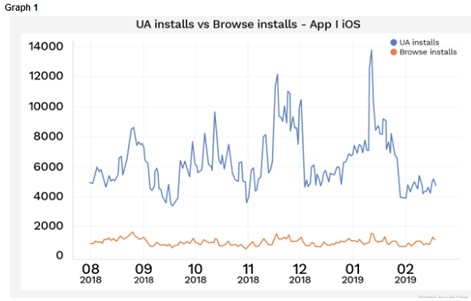
Interestingly enough, although we did find a correlation between the browse and paid channels, we did not find a significant correlation between search traffic and paid traffic (see graph 2). This is very peculiar as both search and browse traffic are categorised as organic traffic, and it is especially interesting for us as our ASO service on iOS mainly focuses on boosting search traffic through keyword optimisation.
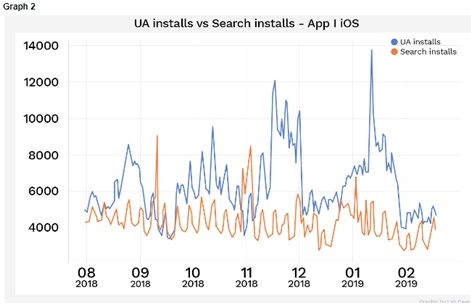
Case Two – No correlation
In the cases of App Two and App Three, the results show that there is no correlation between paid and organic traffic. The graphs below show UA and organic installs for App Two in Google Play, and the study showed a Pearson coefficient of 0.16, which is a very weak correlation.
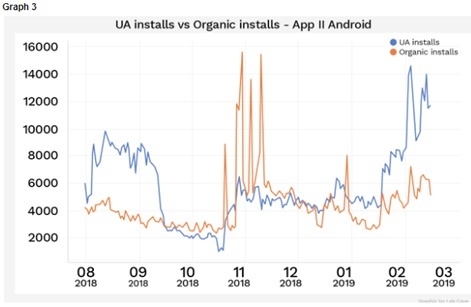
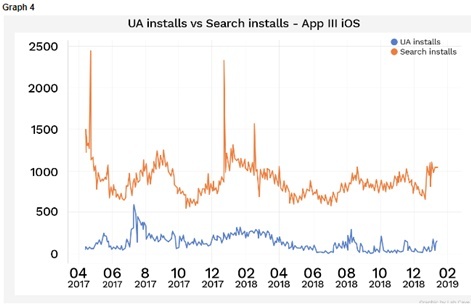
Conclusion
Based on the available data we can conclude that it is not possible to establish a linear correlation between UA installs and organic installs for the time period analysed. Thus, it is even more difficult to numerically measure the exact impact of UA on organic traffic.
However, it is important to mention that these results cannot be applied to all apps and games. Although statistical experiments were carried out, the sample data used for these experiments is very small and analysing three apps does not generate enough information to make strong assumptions on the millions of apps in the market.
During our experience as an ASO agency we have taken on many projects and we have found that every app behaves differently (in terms of traffic), so it is very hard to infer that most apps fall into a specific repeated pattern.
Thus, at Lab Cave we believe in offering a tailored service according to each project, where different techniques and data analyses are applied to each App.
Nevertheless, as a data-driven company, we keep studying and analysing all the data we can get our hands on and the common goal of all of our teams is to simply be at the cutting edge of the mobile industry and to ultimately offer our expertise in the form of ASO services.

